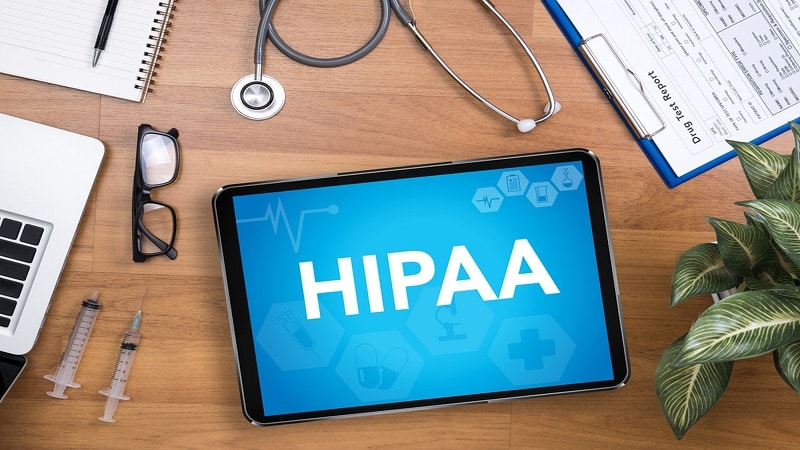
In today's digital era, software development plays a crucial role in healthcare systems, enabling efficient management of patient data and improving overall healthcare services.
However, with the increasing volume of sensitive health information being stored and transmitted electronically, it becomes imperative to adhere to strict regulatory requirements, such as the Health Insurance Portability and Accountability Act (HIPAA).
This article presents 14 essential guidelines for ensuring HIPAA compliance for software development, safeguarding patient privacy and maintaining data security.
Conduct a Comprehensive Risk Assessment

Before embarking on software development projects, it is crucial to perform a thorough risk assessment. Identify potential vulnerabilities and threats to protected health information (PHI), such as unauthorized access, data breaches, or system failures.
This assessment will serve as the foundation for implementing appropriate security measures throughout the development lifecycle.
Implement Strict Access Controls
Access controls are vital in ensuring that only authorized individuals can access PHI. Enforce strong authentication mechanisms, such as unique usernames and complex passwords, along with multi-factor authentication for added security.
Additionally, role-based access control (RBAC) should be implemented to restrict access based on user roles and responsibilities.
Encrypt PHI During Transmission and Storage
Encryption is a fundamental component of HIPAA compliance. All PHI should be encrypted both during transmission and storage to protect it from unauthorized access. Use robust encryption algorithms to ensure the confidentiality and integrity of data.
Encryption keys must be securely managed, and encryption protocols should be regularly updated to adhere to industry best practices.
Establish Secure Software Development Lifecycle (SDLC) Processes
Integrate security into every phase of the software development lifecycle (SDLC). Implement secure coding practices, conduct regular code reviews, and utilize automated security testing tools to identify and remediate vulnerabilities.
Emphasize the principle of “security by design” to ensure that HIPAA compliance is ingrained in the development process.
Maintain Audit Trails and Logging Mechanisms
Maintaining detailed audit trails and logging mechanisms is critical for monitoring and tracking access to PHI. This includes logging user activities, system events, and any changes made to sensitive data.
Robust logging allows for effective auditing, detecting unauthorized activities, and investigating potential security incidents.
Regularly Train and Educate Development Teams
Keeping the development teams well-informed about HIPAA requirements is essential. Conduct regular training sessions to educate developers about the significance of PHI protection, best practices for secure coding, and common vulnerabilities to watch out for.
By promoting a culture of security awareness, the likelihood of compliance breaches can be significantly reduced.
Implement Robust Data Backup and Recovery Processes
Data loss can occur due to various reasons, such as hardware failures, natural disasters, or malicious attacks. To mitigate the impact of such events, establish regular data backup procedures and verify the integrity of backups.
Test the recovery process periodically to ensure that critical data can be restored promptly and accurately.
Conduct Regular Security Assessments and Penetration Testing
Regular security assessments and penetration testing are vital to identify vulnerabilities and evaluate the effectiveness of implemented security controls.
Engage external security experts to perform comprehensive assessments and penetration tests to uncover potential weaknesses in the software system. Address the identified issues promptly and ensure continuous improvement of the overall security posture.
Maintain Documentation and Policies
Document all security-related processes, policies, and procedures in a comprehensive manner. This includes data handling policies, incident response plans, and security incident reporting protocols.
Regularly review and update these documents to reflect changes in the software development environment and evolving HIPAA regulations.
Implement Secure Remote Access
With the rise of remote work and telehealth services, it is crucial to ensure secure remote access to healthcare systems. Implement secure virtual private network (VPN) connections for remote access to PHI.
Utilize strong encryption and enforce stringent access controls to protect data while it is being accessed remotely.
Conduct Regular Vulnerability Assessments
Stay proactive by conducting regular vulnerability assessments to identify and address potential weaknesses in software systems. Use automated scanning tools to detect vulnerabilities in applications and infrastructure components.
Promptly patch or remediate any identified vulnerabilities to maintain a robust security posture.
Secure Third-Party Integrations

Many healthcare software systems rely on third-party integrations for enhanced functionality. When integrating third-party services or solutions, thoroughly vet their security practices and ensure they are HIPAA compliant.
Implement appropriate security measures to protect PHI when interacting with external systems, such as secure APIs, data encryption, and strict access controls.
Establish Incident Response and Disaster Recovery Plans
Prepare for security incidents and disasters by establishing comprehensive incident response and disaster recovery plans. These plans should outline steps to be taken in the event of a breach or other security incidents.
Define roles and responsibilities, establish communication channels, and conduct regular drills to ensure a swift and effective response in case of emergencies.
Stay Updated with HIPAA Regulations and Industry Best Practices
HIPAA regulations and industry best practices for data security and privacy are constantly evolving. It is essential to stay updated with the latest requirements and guidance.
Regularly review HIPAA guidelines, subscribe to relevant industry newsletters, and participate in security forums or conferences to stay informed about emerging trends and evolving compliance standards.
Conclusion
HIPAA compliance is a critical aspect of software development in the healthcare industry. By following these 14 must-know guidelines, software development teams can ensure that PHI is protected, data security is maintained, and patient privacy is upheld.
Adhering to these guidelines not only helps meet regulatory requirements but also contributes to building trust and confidence in healthcare systems by safeguarding sensitive information effectively. Remember that achieving HIPAA compliance is an ongoing process that requires continuous monitoring, assessment, and improvement to address new threats and challenges in the ever-changing landscape of healthcare technology.










